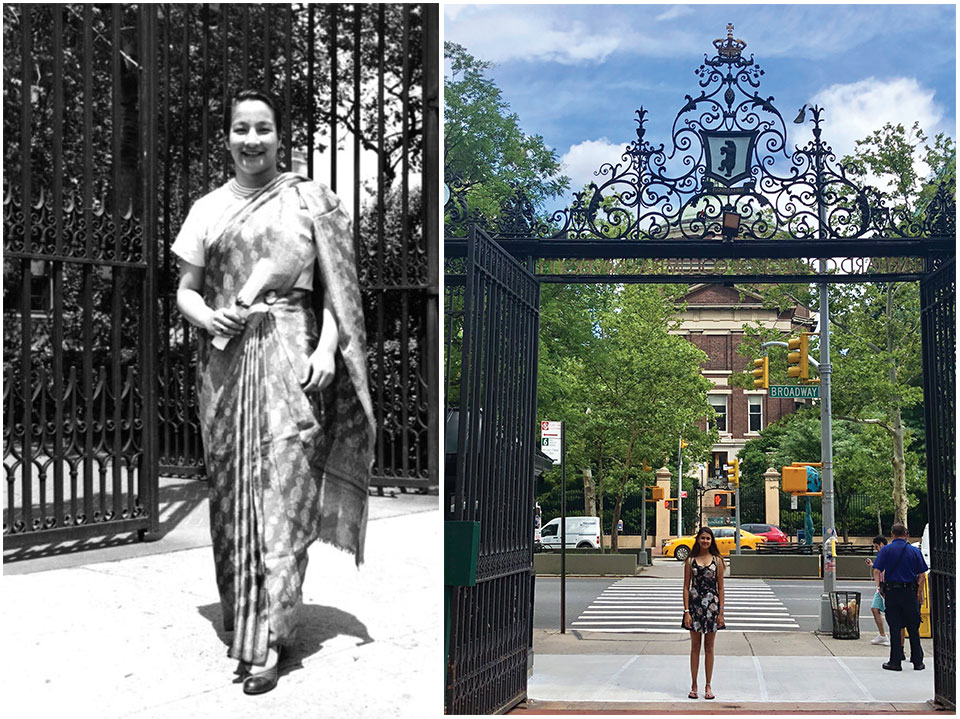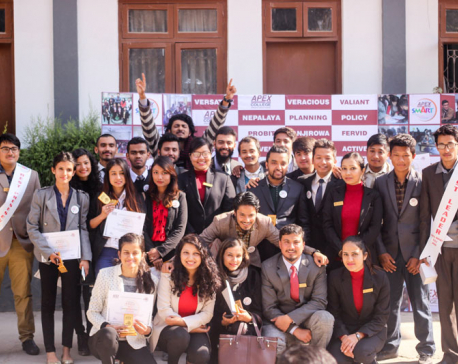
OR

The route to success is not to make yourself fit into a certain college, but to look for colleges in which you are a good fit.
The 2017 Open Doors Report released by the Institute of International Education and the US Department of State Bureau of Educational and Cultural Affairs states that Nepali students studying in US universities are the fastest growing international student population studying in the US. The report shows that Nepal is now 12th among the top 25 countries for both undergraduate and graduate students in the US. Seeing this growing interest of Nepalis my age to go for higher education in the US, I am writing this piece to share some of the information I picked up over summer visiting colleges across the US.
I am a rising senior going into 12th grade this year and was very fortunate that my parents invested money and time to plan a college tour for me over the summer that took me to 14 colleges across the United States in 18 days. I hope my experience will help everyone get a better understanding of how to choose a college and how colleges in the US look at applications of international students.
While this trip may seem extraordinary it pales in comparison to my family’s tryst with higher education in the United States, and what they have done with their education back home in Nepal. My great grandfather, Padma Sunder Malla, was the first Nepali to get a Masters degree from the US when he graduated from the University of Michigan in 1922 with a Masters in Electrical Engineering. He returned to Nepal and utilized his knowledge to design and help build Nepal’s first hydro electric power project that supplied energy to the industrial city of Biratnagar and later built hydro projects in Birgunj and Dharan. He is recognized as a pioneer in starting the nation’s journey in harnessing our immense hydro power potential. Following his footsteps my grandmother Bhinda Swari Shah was the first Nepali woman to go to an American college and graduated from Barnard College in 1956 with a Bachelors in Liberal Arts and a Masters from SAIS, Johns Hopkins University in 1958. She also returned to Nepal, joined the Foreign Ministry and after an illustrious career became the first Nepali woman to be appointed as ambassador, that too as the Nepali ambassador to India.
She is a beacon for gender equality and professional working woman of all ages. My father Anil Keshary Shah went to George Washington University and did his Bachelors in Business Administration before his MBA and came back to build a career in banking and is seen as not only a leading banker, but also a role model by Nepali youth across the country.
Put yourself first
As I was visiting the colleges, thinking of the members of my family who had pursued their higher education in the US, the first bit of clarity I got on my college search process was the need to look inside myself and determine what it is that I want to do for the rest of my life. I feel a lot of us feel the starting point is choosing universities or colleges whose name we have heard or whose reputation impresses us and our families, and applying to them. Stop, don’t do this, the starting point of your pursuit of higher education is ‘You’! Before looking at which college or university to apply for one needs to clearly determine what is it that you are good at, not just which subjects you get good grades in, but most importantly doing what makes you happy.
Once you have clarity on this, then you can start looking at institutions that provide the curriculum and environment in which you can thrive and obtain the knowledge to master the skills you need to build a life that fills you with happiness. That is why most of the institutions that I visited were small liberal arts colleges and universities, because I feel that’s where I will get the education which will give me the knowledge I seek. I feel it is up to every individual who aspires to pursue higher education in the US to first do this before choosing from the ocean of institutions to apply for. Following this, one is now prepared to short-list universities and colleges that will provide you the faculty, environment and resources to pursue higher education in your desired field. From visiting this array of institutions over the summer it became very apparent that whether you like it or not your grades and academic achievements are of foremost importance. They may not be the only thing that matters, but they are a very important factor for institutions when your application is being processed.
Having gone through these visits I feel this too is to our advantage because by doing this, institutions are ensuring that you are able to keep up with the rigor of the academic requirements of that particular college. So take a good look at your grades and academic achievements in your 9th, 10th and 11th grades as well as how you are doing in your 12th grade, when choosing institutions to apply to.
Most colleges want to see how much you challenged yourself during your final years of schooling. They want to see what academic and extracurricular opportunities were available in your school and community, and how much of these did you partake in and take advantage of.
All the institutions I visited clearly stated that they do need SAT or ACT scores for international students, even if they are test optional for US nationals. Again while your score in these standardized tests are not the only factor taken into consideration, they are a critical piece of the evaluation process, especially right at the beginning. Along with this we need to acknowledge that it is far more difficult for international students to get financial aid and scholarships than it is for US citizens. This is so primarily because colleges do not get any support from the US government for aid given to international students, limiting the pool of resources for the same. But this does not mean that you cannot get scholarships, it just means that many of the institutions are ‘need aware’ when it comes to reviewing applications for admissions from international students, and that in turn means whether you applied for financial aid or not will be a factor when your application is reviewed.
You will need to complete a Financial Aid Profile as an international student to show your financial ability and need. And while in many places you will be able to work for about 20 hours a week on campus, this will not be enough to meet the financial requirements of most institutions. However yet again your need for financial aid will not be the only factor, and if you are a good fit to the institution’s community and your presence will add a unique value to the institution, then your application will stand out for sure.
Marks count
The one factor that resonated through all the institutions I visited was that they have a holistic application review process. Which means as such they do not have any ‘cut off’ marks that would qualify or disqualify you. Marks are an important part of the process but not the only part, as colleges look at an array of factors pertaining to the applicant to ensure that they would fit into their community, add value to their class and gain value from being part of the learning journey at the institution. They spend considerable time contextualizing you as an individual, not in comparison with others but looking at you as ‘You’ to determine your fit in their community.
As what an institution is looking for and the fabric of their community varies from one to the other, so there is no ‘cookie cut’ model of one size fits all, in terms of trying to build yourself or your resume to make it attractive to colleges. You also need to consider factors like do you want an urban campus with the buzz of a city around you or a more rural setting with green fields buzzing bees, do you like the cold weather or prefer a warmer place, what is the mix of the student body and yes even what do the dorms look like and what type of food is available in the canteens.
The route to success is not to make yourself fit into a certain college, but to look for colleges in which you are a good fit. If you start your college search journey on this path then the chances are high you will get to the destination you desire. As a rising senior in high school, like many of you, I too am starting this journey and look forward to our paths crossing as we venture forward in our quest for knowledge through higher education in the days ahead.
The author is a grade 12 student at Lincoln School, Rabi Bhavan, Kathmandu
You May Like This

Nepal 12th in foreign college student numbers in US
KATHMANDU, Nov 20: Although the number of Nepali students visiting the US has decreased marginally as compared to the previous... Read More...

Govt allocates Rs 180 million for providing scholarships to children of civil servants
KATHMANDU, July 4: The government is going to spend around Rs 180 million to distribute scholarships to the children of... Read More...

SMART at Apex College
KATHMANDU, Dec 20: Apex College organized a program entitled Systematic Management Application and Reinforcement Techniques (SMART) on Friday. ... Read More...




Just In
- Govt receives 1,658 proposals for startup loans; Minimum of 50 points required for eligibility
- Unified Socialist leader Sodari appointed Sudurpaschim CM
- One Nepali dies in UAE flood
- Madhesh Province CM Yadav expands cabinet
- 12-hour OPD service at Damauli Hospital from Thursday
- Lawmaker Dr Sharma provides Rs 2 million to children's hospital
- BFIs' lending to private sector increases by only 4.3 percent to Rs 5.087 trillion in first eight months of current FY
- NEPSE nosedives 19.56 points; daily turnover falls to Rs 2.09 billion
















Leave A Comment